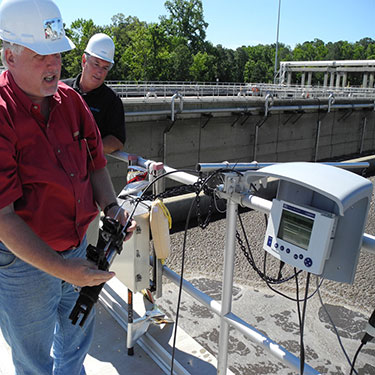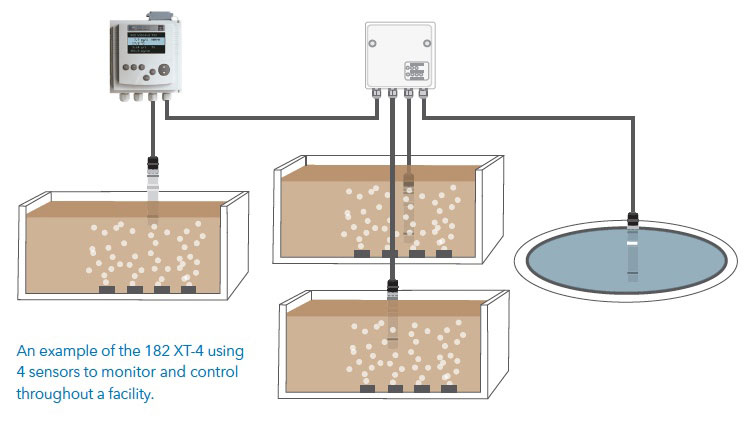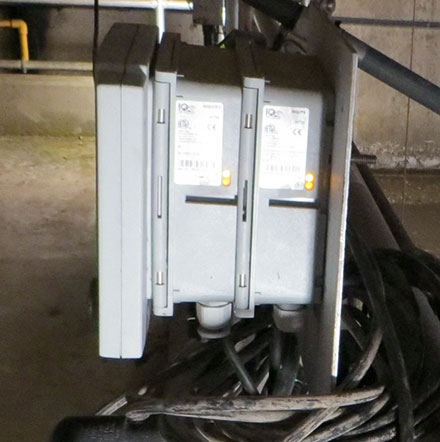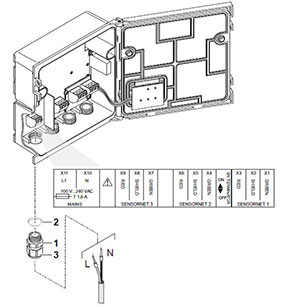Smart Devices Enhance Water Resource Recovery Facilities
‘Smart’ devices have transformed nearly every aspect of our home and work life: smartphones, smart televisions, smart appliances, even smart homes. Process monitoring and control instrumentation is no exception. The online monitoring systems available today are far superior to versions available just 10 years ago providing more measurements more reliably, and at a reduced cost. As a result, there are more opportunities for enhancing the performance and efficiency of water resource recovery facilities (WRRF).
Solutions - Controllers
YSI’s solution for online process monitoring, IQ SensorNet, is a network-based, modular system. Each of the four basic components of the system, sensors, cables, modules, and controllers, has features that make implementation simple and effective. The main topic of this blog is the universal controller.
 The brain of a modern process monitoring system is the universal controller. ‘Smart’ sensors with signal processing make dedicated analog transmitters obsolete but an interface is still needed for measurement display and programming operating functions, for example, programming the sensor measurement range and analog output scaling.
The brain of a modern process monitoring system is the universal controller. ‘Smart’ sensors with signal processing make dedicated analog transmitters obsolete but an interface is still needed for measurement display and programming operating functions, for example, programming the sensor measurement range and analog output scaling.
Furthermore, the implementation of digital communications allows for a universal configuration of the interface and the ability to manage multiple channels with one device – the universal controller.
The IQ SensorNet offers a few universal controller options: a 2- or 4-channel controller (IQSN 282/284), a 20-channel controller (IQSN 2020), and a controller module without a display (MC2). The right controller for your application depends on the number of measurements and monitoring locations, the configuration of the existing SCADA system, and the type of communications.
IQSN 282/284 is the point-to-point configuration solution for control and display of up to 4 channels and is the lowest priced of the controller options. IQSN 282/284 is a good choice for relatively small applications with 1 or 2 monitoring locations needing 4 or fewer measurements each.
It is also a good drop-in replacement for existing monitoring systems where power drops and output wires are installed and only basic controller functions are required for implementation into a facility’s SCADA system. However, the configuration has to be repeated at each measuring location increasing hardware requirements and cost for larger systems.

IQSN 2020 is a network solution for managing up to 20 measurements with a single controller substantially reducing hardware requirements and cost of equipment. It is the best choice to provide the most functionality with the least amount of hardware. Installation costs may also be substantially reduced because fewer conduit runs from the controller to the SCADA system are required. Instead, monitoring locations are linked with a single 2-conductor cable that conveys both power and communications as shown in the figure below.

The 2020 is a portable unit that functions as a controller and a terminal. A spring-loaded mechanical-electrical connection allows any unit to be removed and relocated anywhere in the system a module stack is located.
Instead of providing a display at every monitoring location, up to three 2020 units are deployed throughout the system. One unit is the controller; the other units are display terminals and backup controllers that will automatically take over control functions if the other units malfunction or are removed.
In addition, the 2020 includes data logging capability. For example, up to 90 days of data for 20 measurements logged at 5-minute intervals can be stored. The remaining storage is dynamically displayed as data logging is programmed allowing for quick and simple optimization.
Another added feature is a multi-function USB port. The USB port allows the connection of a USB memory device for the transfer of logged data, logbook entries, calibration history, and configuration. Saving and restoring system configuration data allows quick recovery from unintended programming changes. The USB port also can serve as an electronic ‘key’ to simplify access to restricted functions. The 2020 controller costs a little bit more than the 282/284 controller, but if there is more than one measuring location the controller hardware cost is less for 2020. Therefore, 2020 is a good solution for any facility.
The third controller option is the MC2 “controller in a box”. The system can be accessed using free IQ Software Pack CONNECT software or from up to three 2020 terminals.
The MC2 is the same configuration and has all the features of the 2020. In addition, the MC2 features a built-in barometer for air pressure compensation of dissolved oxygen measurements and a built-in Ethernet/LAN interface. The MC2 is a good solution for customers with an existing SCADA system that want a monitoring system with advanced communication technology.
The MC2 communicates directly over Ethernet/IP with Allen Bradley’s most popular PLC platform and is also programmed for Modbus TCP application protocol. In addition, the monitoring system can be accessed remotely over the internet with a customer-supplied router and the free IQ Software Pack CONNECT. Current measured values can also be viewed using a web browser on a PC or smartphone. For all this, an MC2 controller module is actually less expensive than a 2020 controller although most customers will also purchase at least one 2020 as a terminal and backup controller.
Solutions - Modules
As mentioned above, the four basic components of the IQ SensorNet system includes, sensors, cables, modules, and controllers, that have features to make implementation simple and effective. The modules allow for a lot of customization to a complete system.
One of the most innovative features of IQ SensorNet is that operating functions are physically and functionally modularized. Physically, each IQ module is an identical 5 5/8 – in. x 5 5/8 – in. x 2 in. IP-66 rated polycarbonate box with 4 cable glands. Each module has contact carriers on the front and back allowing stacked mounting of up to 3 modules (see image) with no wiring and includes at least 2 internal SensorNet terminals for connection of sensors or distributed mounting with additional modules through a network cable.
Functionally, each IQ SensorNet module adds a different capability.
For example, every monitoring system requires a power supply. The MIQ/PS is a power supply module and includes a 2-pole mains connection for 120 VAC power and 3 SensorNet terminals (see figure below). Each PS module distributes up to 18 W of 24V DC power to sensors, modules, and controllers throughout the network. Up to 6 PS modules can be located in any single network providing up to 108 W of power.
Many monitoring systems also include analog outputs to connect the monitoring system to external equipment. The analog output modules, MIQ/CR3, MIQ/C6, MIQ/R6 provide up to 6 current outputs or relays to link with a sensor for recording values on SCADA or controlling chemical feed equipment or blowers.
Up to 48 output channels (8 output modules) are possible on any network. For example, a stack of three MIQ/C6 modules may be placed inside a panel to provide 18 x 4-20 mA outputs in proximity to the PLC. Alternatively, the MIQ/2-MOD and MIQ/2-PR modules allow the monitoring system to communicate with SCADA using digital bus technology in place of analog outputs.

A junction box (MIQ/JB) is a passive module for adding SensorNet connections. An unlimited number of junction box modules (MIQ/JB) can be added to provide an inexpensive and convenient means of adding measuring locations or system branch points through 4 SensorNet terminals. Competitive systems include expensive integrated controller/modules that must be located at every monitoring location. An example configuration would include a stack of two MIQ/JB modules to provide 6 terminals for sensors and 2 terminals to connect the measuring location into the middle of a network.
The IQ SensorNet modules make system expansion simple and inexpensive. A WRRF buys the capabilities they need or can afford today. Modules are added to the system to expand or upgrade the system in the future.
Additional Blog Posts of Interest:
Can Smart Devices Enhance Resource Recovery Facilities? Part 2
Wastewater Aeration Control - Energy Cost Savings Examples
Myths and Realties: Ammonium Based Aeration in Wastewater
Troubleshooting Nitrification and Denitrification in Wastewater